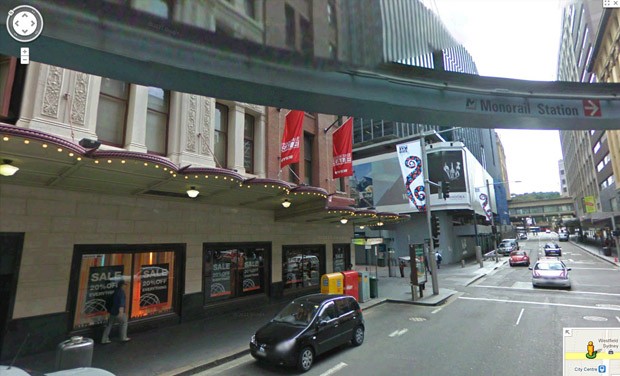
Many Sydneysiders have taken enthusiastically to architect David Vago’s idea, inspired by Manhattan’s High Line, of turning the Sydney Monorail track into an elevated walking and cycling path.
When the Sydney Morning Herald posed the question in its on-line survey, “should the Monorail be replaced with a High Line similar to New York’s?”, 81% of the almost 12,000 readers who participated answered in the affirmative.
Mr Vago calls his proposal the High Lane. That’s awfully cringe-inducing but a great bit of marketing – perhaps he should call it the Head Line?
I’d like to suggest some other names that I think more accurately capture the value of Mr Vago’s idea.
The Fine line (or maybe the Thin Grey Line) is appropriate because the proposed path would only be around 3 metres wide for the greater part of its length. That’s around what you typically get on a bike path – enough for two bikes travelling in opposite directions to pass comfortably, but nothing more. In this case, the path would be hemmed in by high railings on both sides.
Manhattan’s High Line is not a relevant model because it’s much wider (you can take a virtual “walk” along it here). It used to carry three rail tracks and I estimate it’s at least ten metres wide for most of its length.
It’s not just a walkway, it’s a linear park. It has gardens, shrubs, places to sit and places to have a picnic. It’s a real recreational open space, whereas Mr Vago’s proposed faux High Line would essentially be a very long footbridge.
Alternatively, the proposal might be called the Shadow Line. Much of the monorail is built over city centre streets like Liverpool, Pitt and Market. While it would be narrow, a three metre wide elevated path would nevertheless loom heavily over the streetscape, casting shadows, obstructing views and blighting even further the appearance of some of Sydney’s premier streets.
Again, the High Line is a poor analogy because it doesn’t occupy street space. It mostly goes through blocks and so has buildings on one or both sides.
Or it could be named the Dead Line. Sydney’s streets have a huge range of shops and activities to engage the pedestrian, but an elevated walkway would necessarily have few, if any. It wouldn’t be ‘activated’. Another possibility is the Off Line, which reflects the criticism that the monorail route doesn’t go where most people want to go.
Given Mr Vago’s unrealistic estimate of a mere $5 million to construct it, the Red Line might be an appropriate name. And if pedestrians and cyclists were to share such a narrow, fenced path as proposed, it could be called the Blood Line.
Then again, it could be called the Drag Line, since there’s a fair chance that retaining the track and pylons would get in the way of providing light rail. Retention would almost certainly constrain the planned redevelopment of the Darling Harbour precinct.
However as with everything, it’s never all downside – Mr Vago’s High Lane would have some virtues. It would offer a novel view of the streetscape for visitors. It would provide another route for walking between the eastern side of the CBD and the western side.
If reserved for cyclists it could provide a path segregated from traffic and pedestrians (it would be silly to make it a shared path). While the cost of building a path would be much, much higher than Mr Vago’s estimate, the cost of demolishing the existing infrastructure (estimated to be $15 – $20 million) also has to be taken into account.
Personally, I think it’s outrageous to compare this proposal with Manhattan’s High Line. The latter is a destination in its own right, whereas the High Lane could only ever be a footbridge, albeit an extremely long one. I reckon Mr Vago’s proposal should be called the Bye Line and quickly forgotten.
A city’s downtown is a precious asset and should be protected and nourished. The monorail was a bad idea at inception and wasn’t helped by being built on the cheap. Sydney doesn’t need to do another Cahill Expressway – that would be a High Crime.







Crikey is committed to hosting lively discussions. Help us keep the conversation useful, interesting and welcoming. We aim to publish comments quickly in the interest of promoting robust conversation, but we’re a small team and we deploy filters to protect against legal risk. Occasionally your comment may be held up while we review, but we’re working as fast as we can to keep the conversation rolling.
The Crikey comment section is members-only content. Please subscribe to leave a comment.
The Crikey comment section is members-only content. Please login to leave a comment.